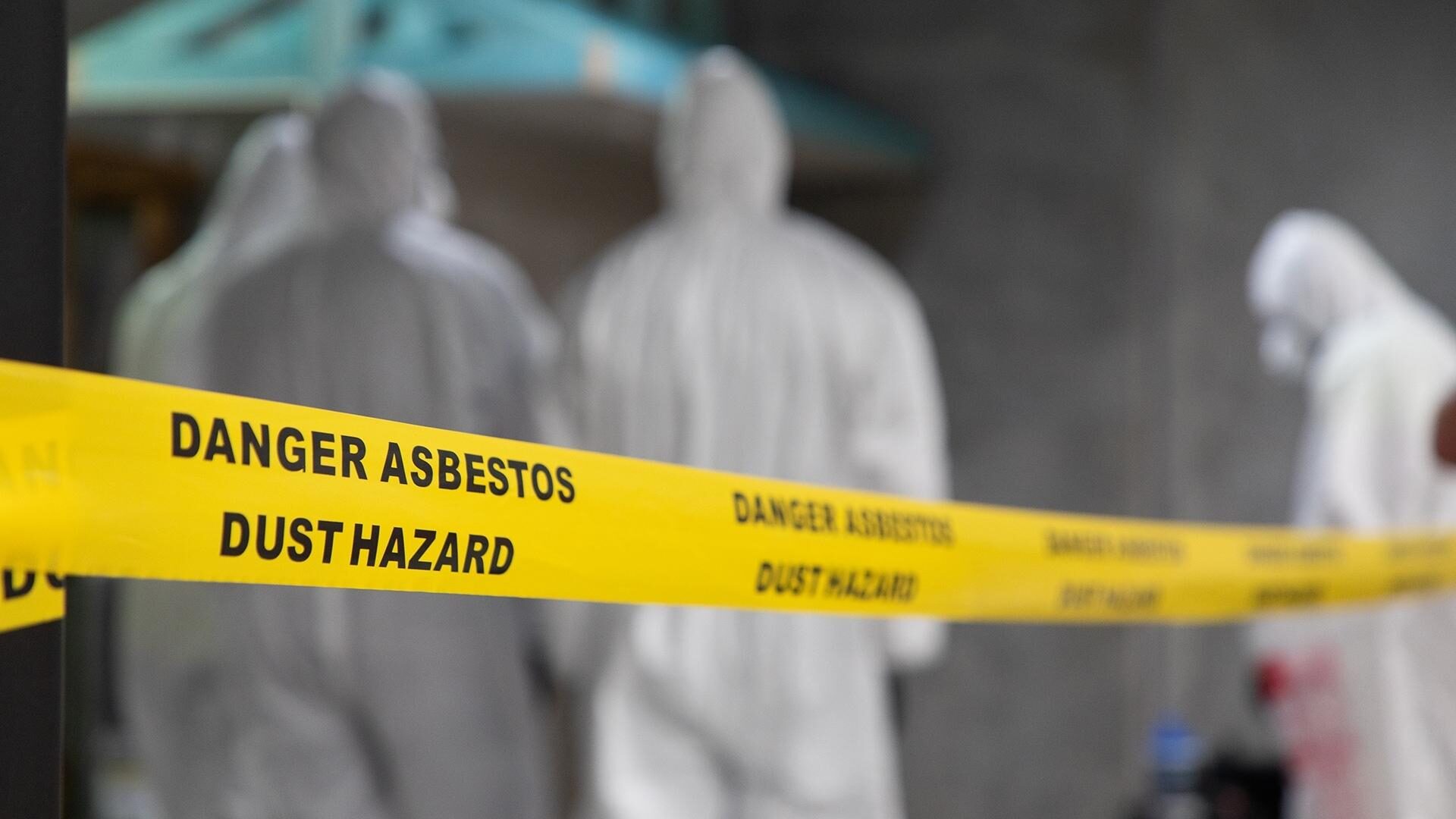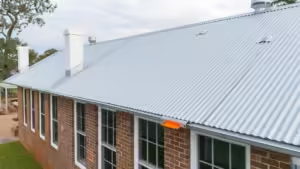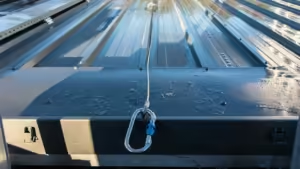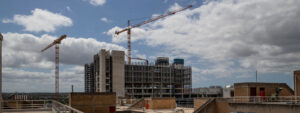Although it has been outlawed for nearly three decades, there are still many places where workers can commonly come across asbestos contamination.
Asbestos is a group of naturally occurring silicate mineral fibres. Asbestos was utilised heavily through the industrial revolution and well into the 20th century for a variety of reasons due to abilities to act as an insulator, its strength and resistance to fire, water, and chemical corrosion.
The use of asbestos started to decrease in the 1980s as it was phased out of residential construction, and it was finally banned completely in Australia at the end of 2003.
Asbestos is known to pose significant health risks when its fibres are inhaled. Repeated exposure to asbestos fibres increases the risks of mesothelioma developing, which is an incurable form of lung cancer.
Although its use has been outlawed for 20 years, asbestos is still commonly found in a variety of different workplaces across the country. It is vital that workers understand what asbestos is and where it can be found on the job site.
What is asbestos?
There are six types of asbestos, with each being made up of long, thin crystals. Chrysotile (white) and amosite (brown) made up about 99 per cent of asbestos containing materials between them. Crocidolite (blue) was less than one per cent with tremolite, actinolite and anthophylite in trace amounts making up the rest.
Asbestos is naturally occurring and can be found in deposits all over the world. In Australia, the town of Wittenoom in Western Australia was, at one point, the county’s only supplier of blue asbestos (crocidolite). Today, the down is degazetted (that is, no longer recognised as a town and removed from maps and road signs) and abandoned as one of the most contaminated sites in the southern hemisphere.
When inhaled, the fibres can embed themselves in the lungs and, over time, significantly increase the risk of mesothelioma, lung cancer and asbestosis developing. These cancers are incurable and often fatal.
Asbestos containing materials come in two main varieties – friable (loose) and non-friable (bonded). Friable asbestos is any material where the asbestos fibres can be crumbled into powder by hand when dry. Non-friable asbestos cannot be crumbled by hand in the same manner.
When was asbestos used?
The earliest use of asbestos dates back almost five millennia. However, it was through the mid-1800s that it began to be used on an industrial scale.
Throughout the 20th century its popularity continued to rise. It is estimated that in Australia approximately two out of every three homes build between the end of World War II and the 1980s contains some form of asbestos containing material.
The dangers to health from asbestos inhalation were discovered at the turn of the 20th century, however its use continued long after that time.
Into the 1970s and 1980s, the use of asbestos began to decline as concerns about the health risks became more significant.
Australia banned the use of asbestos in building and construction work in 1989, and it was completely banned on 31 December 2003. Around the world, at the same time, similar bans started to be put in place.
There are only a handful of countries that continue asbestos mining to this day.
Asbestos in houses
Due to its versatility and ease of use, asbestos was used heavily in house construction in the post-war period, up until the late 1980s. This means that a vast number of houses across Australia are likely to contain asbestos in one form or another even though it was banned over 30 years ago.
Non-friable asbestos containing materials include fibrous cement cladding, corrugated and compressed asbestos. These were commonly used in roof sheeting and shingles.
Asbestos cement products were also commonly used as wall cladding, as ceiling materials, waterproofing in kitchens and bathrooms as well as underlays for vinyl and carpeted flooring.
Friable asbestos products commonly used in houses include the infamous “Mr Fluffy” insulation.
During the 1970s, this pure asbestos product was sold as ceiling insulation across Canberra and the ACT. As it was a loose fill produced (that is, the asbestos fibres were laid direct into the roof cavity), the houses were “Mr Fluffy” was present represented a substantial health hazard to the occupants.
During the late 1980s and early 90s the Commonwealth Government funded a program to identify and remediate these houses. Over 1000 were identified at the time, with more found following the programs completion.
Asbestos in commercial and industrial buildings
Asbestos was not just used in residential building construction. It had extensive commercial and industrial uses.
Many different pieces of plant and equipment often used asbestos containing materials in gaskets as well as brake and clutch mechanisms.
Asbestos was also used in HVAC systems including cooling towers and air-conditioning units due to as capabilities as an insulator. This also led to it being used in heating and boiler systems. ACMs were also commonly sprayed on the associated pipework.
The fire-resistant properties of asbestos also means it can be found in places where fire retardant was installed, including furnaces and other areas where open flames can be present.
The hidden danger of asbestos in industry
One thing that can make asbestos and asbestos containing materials more dangerous when working in industrial and commercial settings compared to residential housing is that the banning of its use in equipment came much later than the banning of use in construction.
Asbestos products were banned in 1989, however a complete ban was not introduced until 2003. This can mean that tools, plant, and equipment manufactured in what might be considered a “post-asbestos” period could potentially contain asbestos fibres still.
Being unaware that a tool or piece of equipment being used or worked on may contain asbestos fibres can expose workers to significant health risks. It is important that everyone be aware of just how many things still in use today were manufactured in a period where asbestos use was still allowed.
Other places asbestos can be found
The sheer volume of products and materials that contained asbestos is staggering. This means there are far more places and objects with asbestos contamination than anyone might reasonably think.
Several million communications pits put in place around Australia were made using asbestos containing materials – meaning that telecommunications workers need to be aware of the risks of exposure when servicing equipment contained within them.
Laundries can become contaminated with asbestos when clothes worn while working with ACMs are washed. This contamination can spread to other clothes washed in the same machine and in the same load.
Tools used to work with ACMs can be contaminated, no matter how deeply and carefully they are cleaned. Any tools used in asbestos work must be bagged, sealed, kept separate from all other work equipment, and only be used for other asbestos work.
Identifying asbestos contamination
Workers should be equipped with the skills to identify areas of potential asbestos contamination and respond accordingly.
11084NAT Course in asbestos awareness is a nationally accredited training course that provides workers with the knowledge and skills to understand the risks of asbestos contamination, identify areas where contamination is likely and understand what the correct responses and reporting mechanisms are.
This course is also a required competency for any tradesperson looking to work in the ACT and Canberra.
Height Safety Engineers (RTO 91227) can provide this training course at our HSE Sydney and HSE Dubbo training centres, or at your workplace for group bookings (conditions apply). Discuss your training needs with our team by calling 1300 884 978 or email enquiries@heightsafety.net.





